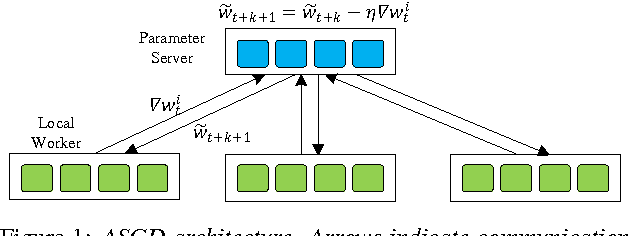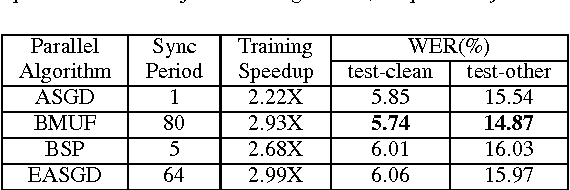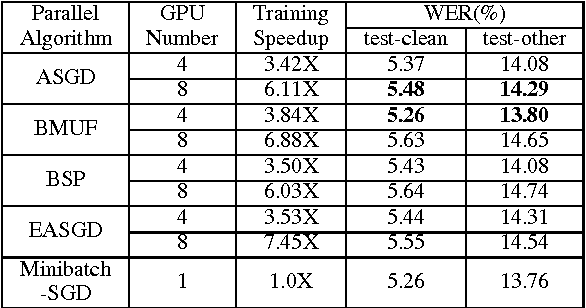Empirical Evaluation of Parallel Training Algorithms on Acoustic Modeling
Paper and Code
Jul 26, 2017



Deep learning models (DLMs) are state-of-the-art techniques in speech recognition. However, training good DLMs can be time consuming especially for production-size models and corpora. Although several parallel training algorithms have been proposed to improve training efficiency, there is no clear guidance on which one to choose for the task in hand due to lack of systematic and fair comparison among them. In this paper we aim at filling this gap by comparing four popular parallel training algorithms in speech recognition, namely asynchronous stochastic gradient descent (ASGD), blockwise model-update filtering (BMUF), bulk synchronous parallel (BSP) and elastic averaging stochastic gradient descent (EASGD), on 1000-hour LibriSpeech corpora using feed-forward deep neural networks (DNNs) and convolutional, long short-term memory, DNNs (CLDNNs). Based on our experiments, we recommend using BMUF as the top choice to train acoustic models since it is most stable, scales well with number of GPUs, can achieve reproducible results, and in many cases even outperforms single-GPU SGD. ASGD can be used as a substitute in some cases.
 Add to Chrome
Add to Chrome Add to Firefox
Add to Firefox Add to Edge
Add to Edge